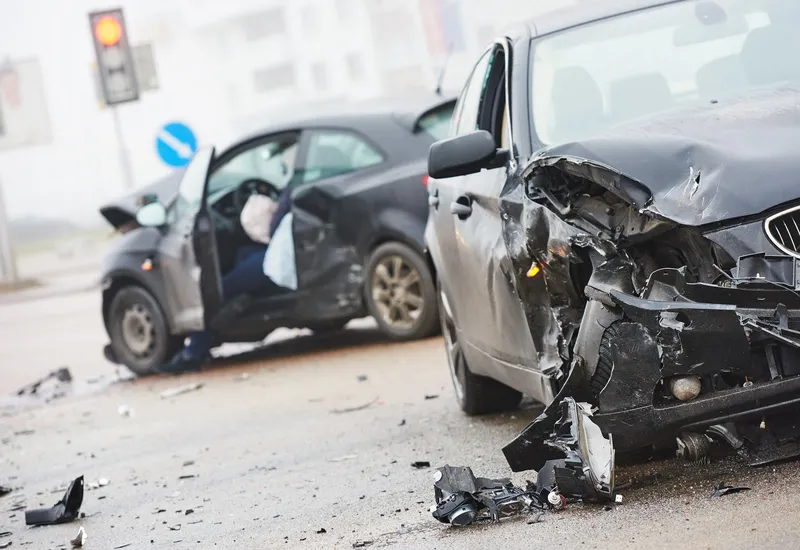
Although most Americans own at least one car, few motorists fully understand how car insurance works. Without understanding California auto insurance claims laws, you won’t be able to fully exercise your rights and obtain the compensation you deserve.
This can put you at a serious disadvantage after you get in a car accident.
We’ve put this guide together to help you learn about the basics of California auto insurance claims laws.
We’ll cover the basic types of car insurance coverage types, California’s minimum auto insurance requirements, and how you can take steps to maximize the amount of your car accident compensation in California.
What Are the Basic Types of Auto Insurance Coverage in California?
It’s essential to know some basic insurance terminology and coverage types to help grasp the significance of California’s minimum auto insurance requirements.
Most car insurance policies will include some or all of the following types of coverage, which protect you against specific hazards.
Collision Coverage
As you might guess from the name, collision coverage refers to what your car insurance company pays after your car is damaged in an accident. The money compensates you for the cost of repairing the vehicle.
However, if the cost of repairs exceeds the present value of the car, then your car is “totaled,” and the insurance company will pay you an amount equivalent to the fair value of your vehicle just before the accident.
Collision coverage is a great idea if your car is brand new. However, if your car is older or less expensive, you may not need collision coverage.
Liability Insurance
Liability insurance helps protect you from the costs of an accident that you cause. Specifically, it pays for the injured party’s property damage and medical costs.
As long as the other party’s damages do not exceed your policy’s maximum amount, you’ll pay no out-of-pocket expenses.
Comprehensive Coverage
Comprehensive coverage covers any kind of damage that isn’t caused by a car accident. This includes things like hail or water damage, vehicle theft, and damage caused by hitting a mailbox or deer.
Like collision coverage, comprehensive coverage doesn’t pay for any damage that exceeds the value of your car.
For that reason, it’s ideal for policyholders with newer vehicles.
Personal Injury Protection (PIP)
Personal injury protection (PIP) compensates you for the cost of your own medical bills and expenses. PIP also covers the healthcare costs of any passengers in the vehicle at the time of the accident.
Fortunately, PIP applies regardless of who caused the accident.
Uninsured/Underinsured Motorist Protection (UM/UIM)
Although car insurance is a legal requirement for all California drivers, there are many uninsured and underinsured motorists driving around.
If an uninsured or underinsured motorist hits your car, you may not have the money to cover your damage and healthcare expenses.
With UM, your insurance company essentially steps into the shoes of the other driver’s insurance provider and pays you for your losses.
With UIM, your car insurance provider will pay whatever the underinsured driver’s insurance company fails to cover.
What Are California’s Minimum Auto Insurance Requirements?
Per California law, the minimum liability insurance requirements are:
- $5,000 for property damage;
- $15,000 for the bodily injury or death of one person; and
- $30,000 for the bodily injury or death of multiple people in the same accident.
These requirements are below what is required to actually protect you if you are found to be the cause of an auto accident.
In a serious accident, property damage can easily exceed $50,000, and medical costs can exceed $100,000.
According to insurance experts, the ideal amount of liability coverage is:
- $100,000 for property damage;
- $100,000 for the bodily injury or death of one person; and
- $300,000 for the bodily injury or death of multiple people in the same accident.
Having sufficient coverage lets you rest easy in case your insurance provider decides you are the at-fault party in an accident.
What Steps Can I Take to Maximize My Car Accident Lawsuit Compensation in California?
Let’s assume that you or a loved one have been involved in an accident, and you’ve decided to file a claim for compensation. Below are several key steps that will help you obtain fair compensation.
#1: Get Medical Treatment for Your Injuries Right After the Accident
This is vital even if you don’t think you’re injured. At the very least, seeing a doctor can ensure that you have a clean bill of health after an accident.
Or, the doctor may discover injuries you didn’t realize you had. This forever links the injuries to the accident and prevents the insurance company from claiming your injuries had some other cause.
Some injuries take months to develop, so getting diagnosed and treated promptly can stave off medical crises and unforeseen expenses down the road.
#2: Do Not Talk to Any Insurance Companies Without Representation
The at-fault driver’s insurance company will probably reach out to you shortly after the accident. You can expect them to ask you questions about the accident.
Many companies will pretend like they are collecting information so they can give you a generous settlement.
In reality, they’re obtaining information that they can potentially use against you. For that reason, we recommend you avoid speaking with insurance companies.
The insurance company may also give you an immediate cash offer to settle your claim. Never accept this. These are almost always lowball offers for far less money than your case is worth.
And if you accept it, you can never go back for more, no matter how much more money your injuries cost you in the future.
#3: Preserve All Evidence
Proving your case in court will require evidence. While an attorney can help you collect some evidence, it’s best if you get some evidence yourself if possible.
Specific kinds of evidence you should retain include:
- Photo or video evidence of the accident or your injuries;
- Eyewitness contact information;
- Evidence of lost wages, like pay stubs, leave requests, etc.;
- Medical records, including hospital bills, test results, and rehabilitation visits;
- Any official reports about the accident; and
- Receipts for the repair or replacement of any damaged property.
The more evidence you preserve after the accident, the easier it will be to prove your claim in court.
#4: Retain an Attorney
This is one of the most important steps. A qualified, experienced car accident attorney can work wonders for your case.
Because they have a vast amount of experience with car accidents, they know exactly how the law applies to your case and how to best present your case in court.
They will also have the skills to aggressively negotiate a fair settlement on your behalf with insurance companies and other attorneys.

Let Us Help You Obtain Justice
Here at the Weinberg Law Offices, we help our clients stand up for their rights.
We know how hard it can be to handle legal issues when you’re struggling with hospital visits, mental trauma, and stacks of bills. Let us help you get fair compensation.
Call us at 818-697-1079 or contact us online to schedule a free initial appointment today.
Disclaimer: This content should not be construed as legal advice.

